Industry City is a strange place. Just one stop north of our headquarters in the historic Brooklyn Army Terminal, it’s the closest thing New York has to an office park: a 40-acre expanse of old warehouses filled with artists’ studios, chocolate factories, and cafes where a cup of coffee could set you back a cool $14.75 (yes, really). Somewhere in those six million square feet of space, designer Danielle Trofe is hard at work. Or at least we imagine she is. She certainly was when we arrived to tour her studio, a sunlit space filled with pothos and other plants and objects made from her signature material, mycelium.
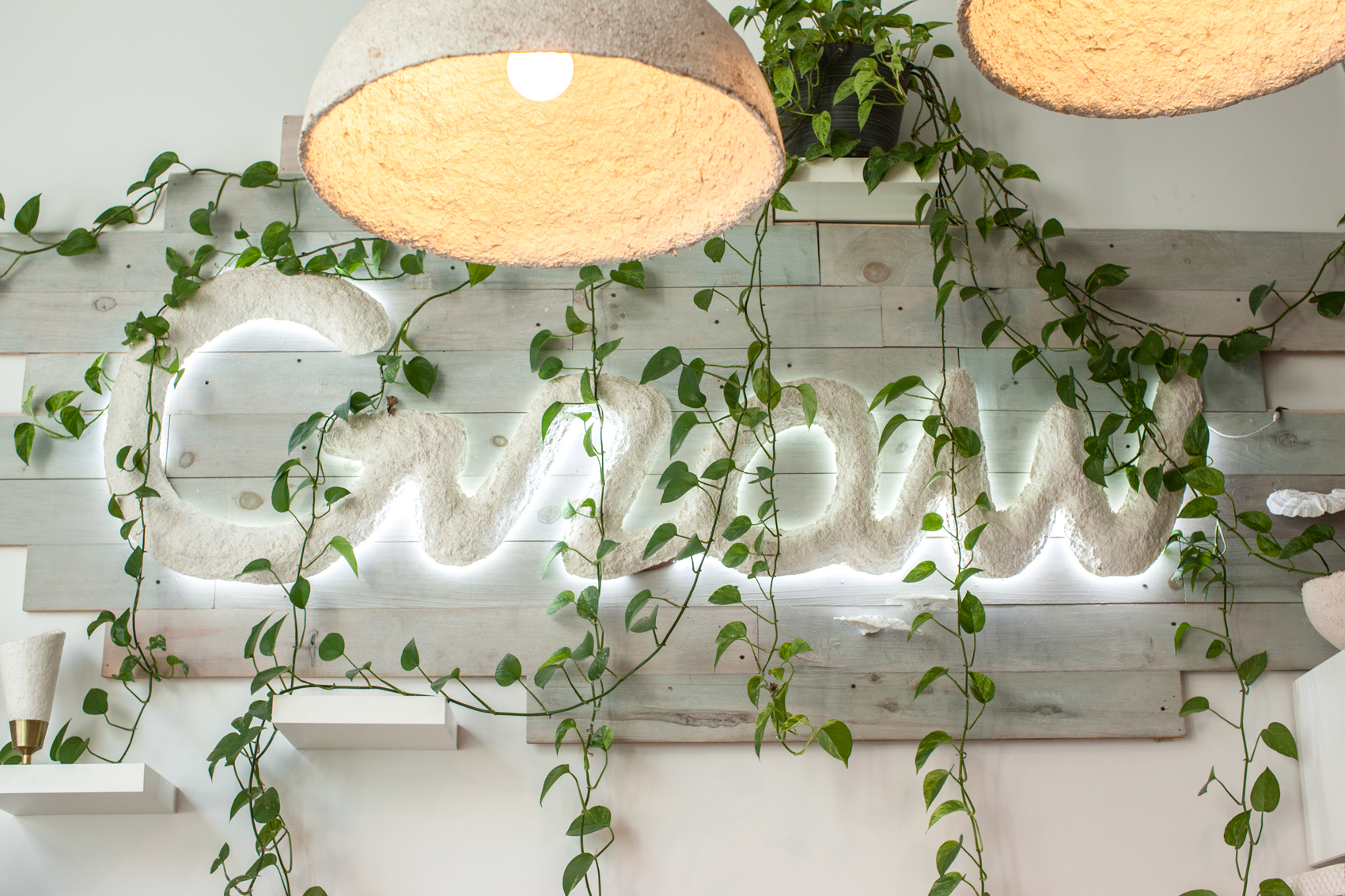
If you’re browsing our blog and you’ve heard the word “mycelium” before, chances are you already know that Danielle is the creator of the Mushroom Lamp, an eco-friendly answer to high-end lighting. If you haven’t, you might be interested to know that Danielle’s lamp is made with a shade grown—yes, grown—from mushrooms’ roots and a base handcrafted with salvaged ash wood. It’s sleek, sophisticated, and makes planet Earth happy, too. But of course, it’s not the only thing Danielle makes. In her studio, you’ll find everything from hanging lamps shaped by hand over time to a large sign that says “grow” in playful cursive script. And that one word kinda sums it up, doesn’t it? Danielle’s a designer whose objects really, truly grow, changing shape, size, and texture over time until they’re juuuust right.
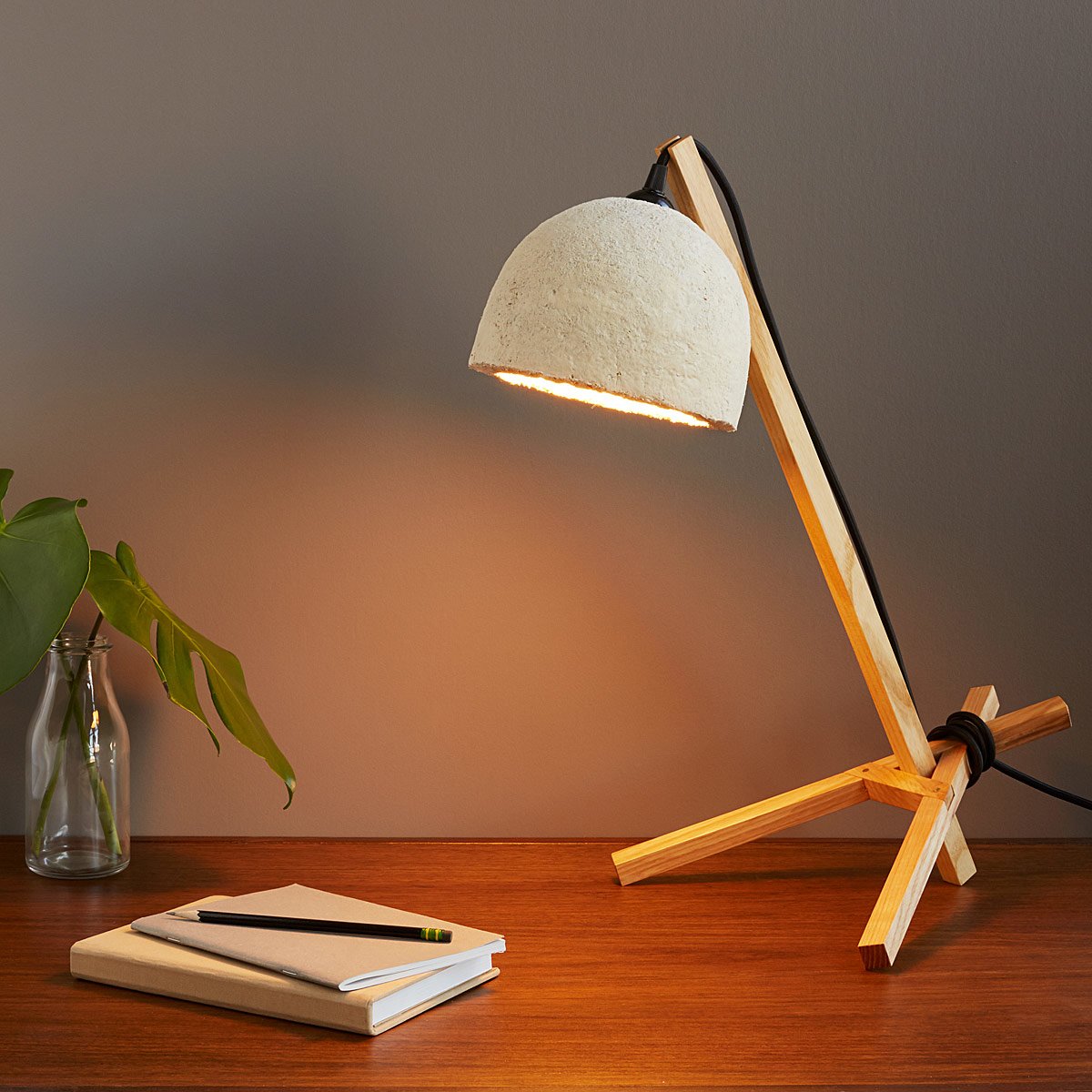
The Mushroom Lamp | UncommonGoods
On a gorgeous, unseasonably balmy May day, we visited Danielle in Industry City and asked all about the stuff she makes—whether it’s safe for folks with mushroom allergies (yes), whether it’ll fall apart if you get water on it (not right away, but don’t pour water on a lamp, please), whether you can eat it (technically you could, but again, please don’t), and more. Read on for our full Q&A, plus more photos of Danielle’s stunning space.
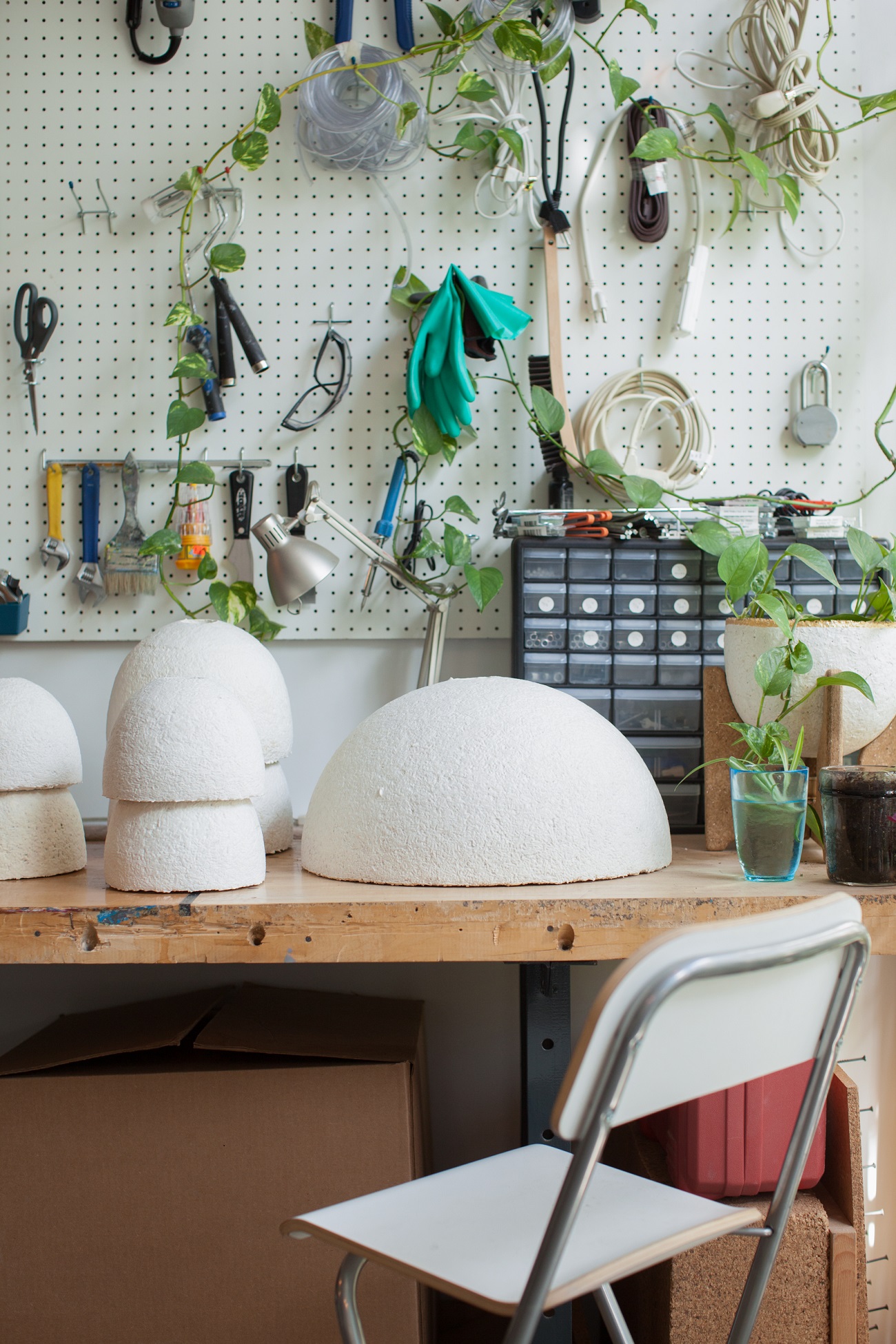
What are your most essential tools?
I wouldn’t be a designer if it weren’t for 3D modeling software. … Unfortunately, I lack the refined sketching skills this profession once demanded, so powerful software tools that allow me to transfer the 3D image in my brain into a visual representation have been essential. Add accessible 3D printing and … 2-day shipping and I can make/receive most prototyping parts within hours rather than weeks.
How did you first learn about mycelium?
I came across a sample of Ecovative’s mushroom materials at MaterialConneXion’s library in Manhattan. I instantly fell in love with the material, its soft and light feel, the fact that it is grown from a living organism, and its life-cycle analysis—derived from a waste product and biodegradable at the end of its life.
Where do you find inspiration within this space?
My workspace is my entire environment, as far as the [eye] stretches, whether that’s in my studio at Industry City, in my immediate urban residency, Brooklyn, or out in a natural setting, my preferred ecosystem. What I have always naturally done and continue to direct my energies towards is bringing nature, nature’s inspiration, and technology to the urban dweller, whether through hydroponic vertical gardens, lamps grown from mushrooms, or from bacteria and algae symbiotic relationships that can be harnessed to create energy.
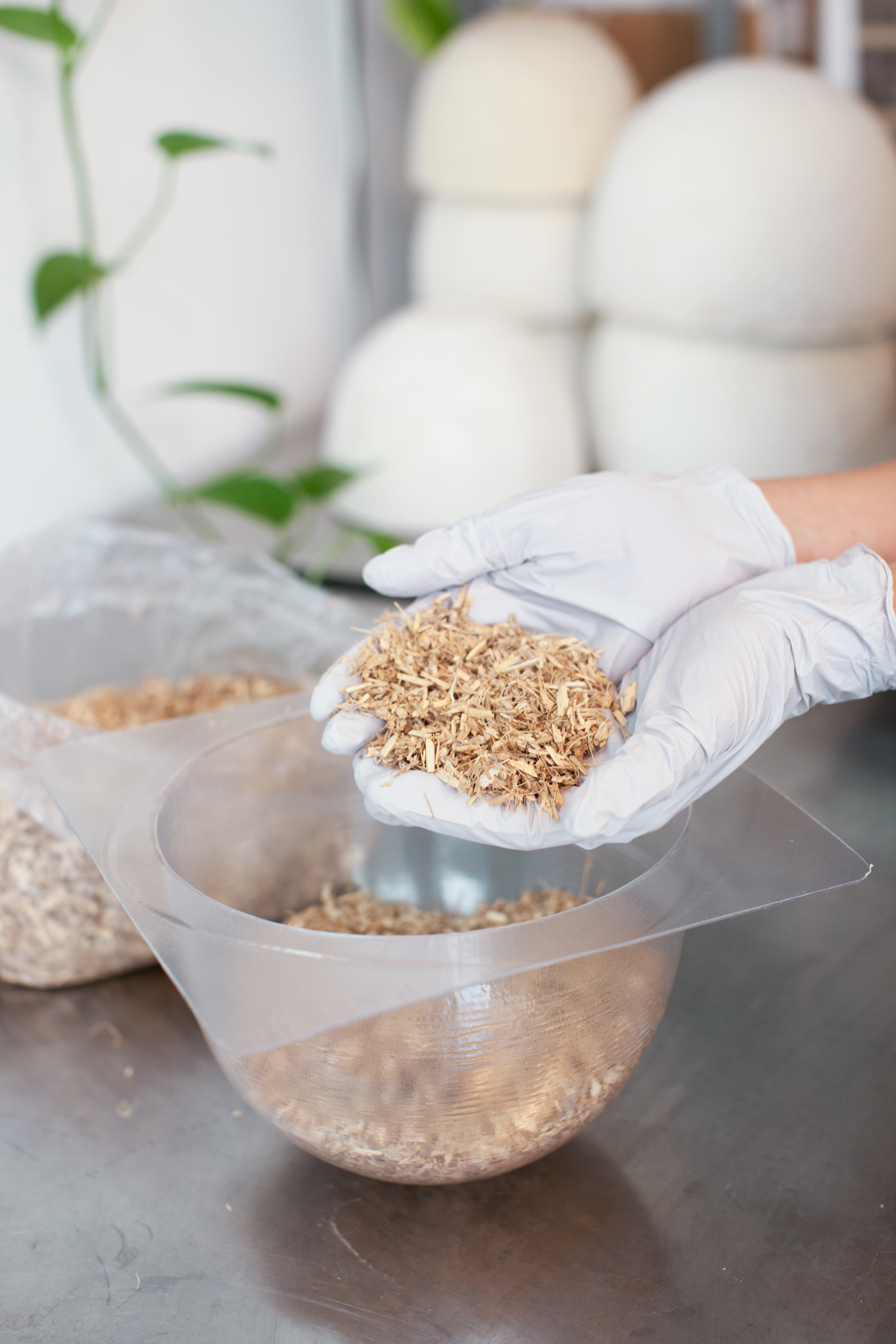
The objects in your studio vary a little in color and finish. Is that something you control?
You can tune the material to express different grow finishes. … If clients request it, we’ll add organic milk paint, so we can add color. We also worked with the Textile Arts Center in Brooklyn and tested organic dyes, and they work well.
How do you recharge your creativity?
Get out of NYC as often as I can. Get out into nature, to museums and events, but mainly making time and space to connect to my inner self through various practices like yoga, meditation, and experiencing the natural world.
Where does downtime fit into a day in the studio?
Downtime looks like a mid-afternoon muffin and tea/coffee break (I have a mild pastry addiction) usually followed by some form of yoga or exercise in the evenings. I also highly value the first hour of my day to be a relaxing, solo experience with coffee and homemade breakfast. There’s no talking in this first hour, but usually a very verbal cat.
Is the mycelium used in the Mushroom Lamp still alive?
No. The last step [in the growing process] is it’s heated in industrial-sized ovens at two hundred degrees—a low temperature—and that’s just enough to damage the living cells, so the organism dies. [This] mainly just protects the user from any kind of sprouting mushrooms or sporing, so that’s why there’s no allergens, and it also creates a much more stable product that over time’s not gonna change and evolve. So it’s no longer living, unfortunately.
How do you prototype this stuff?
Everything is 3D printed on the MakerBot. … 3D printing has really empowered the independent designer to be able to iterate at such a lower cost and such a higher speed, so it’s pretty amazing. It’s a nice asset to have doing this.
What was the toughest lesson you learned as a young designer starting a business?
Patience. And I’m still learning this. Timing is everything and the only thing you can really control in an unpredictable industry, market, or economic climate is your ability to be prepared for that right moment, if and when it comes along, and what you want to bring to the table. Just showing up is another great takeaway from everyday life. You can’t make things happen or meet the right person that will open doors if you don’t show up.
What advice would you offer the you of 5 years ago?
It’s a marathon, not a sprint. So stretch and pace yourself because you can and will burn out if you can’t create a balanced live/work schedule and life. Enjoy the entire process too, not just the idea of the “arrival.”
How do you set goals for yourself?
I write a lot of lists. Everyday lists, weekly, monthly, quarterly lists that are not only to-do’s but short-term goals and aspirations. Without my lists I would have a very difficult time finding structure, staying focused, and pursuing a path that I’m forging in a thought out and mindful way.
What’s one thing you’d like to try to make from mycelium in the future?
Lately I’ve had a design for a chair in my mind using Ecovative’s new 100% mycelium foam. Keep an eye and an ear out in the future.
How and when do you decide to celebrate a victory?
Stop and enjoy them when they’re happening. But they come and go, as do failures, which are equally valuable in delivering important lessons. Failures are just not as enjoyable to the ego as victories are, though I always push to find the silver lining.
What quote or mantra keeps you motivated? What does it mean to you?
I actually don’t have one in particular, but appreciate the wisdom my Yogi Tea bag tells me everyday. It’s usually right on the money.
What are some new skills you’re trying to acquire to perfect your craft?
I just received a master’s degree in biomimicry from Arizona State University, so incorporating this practice of looking at nature’s form, function, and ecosystem and emulating the deep principles and patterns of how nature eloquently solves the same challenges we, humans, struggle to tackle is the basis of creating completely unique and innovative solutions. I want to bring this interdisciplinary practice to the public through design, while also reconnecting us with nature.
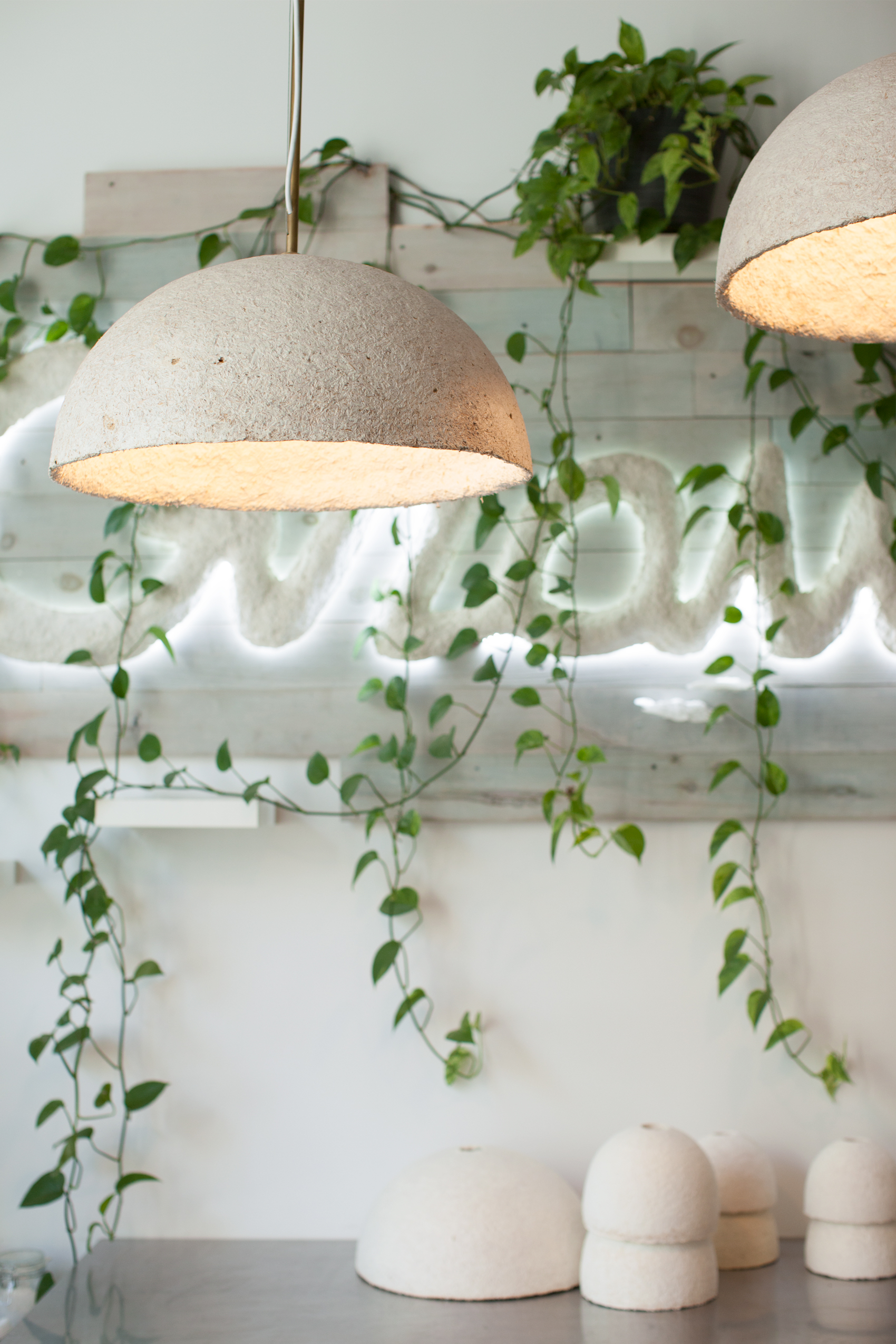
When you’re not busy working with mushroom material, how do you like to pass the time?
I’m currently writing a report and proposal for my newest body of work in carbon capture and storage. I would love to direct my energies towards larger, global challenges and helping to deliver solutions inspired by nature that create impact on both social and economic fronts. My studio is slowly shifting into a biomimetic design solution space and welcomes collaborations across all sectors in order to address the growing concerns of the negative impacts of climate change.
Where does collaboration come into play with your craft?
Collaboration for me has been key in working with new materials and processes. Creating relationships with emerging biomaterials companies, such as Ecovative, enables both parties to benefit in ways they couldn’t foresee. It’s been a fantastic experience to work with mushroom mycelium and the pioneers that paved the way in developing this material science. If everyone is empowered to do what they do best, scientists, designers, and engineers … are able to find a common ground and open communication, [and] new possibilities bring unique and exciting products and experiences.
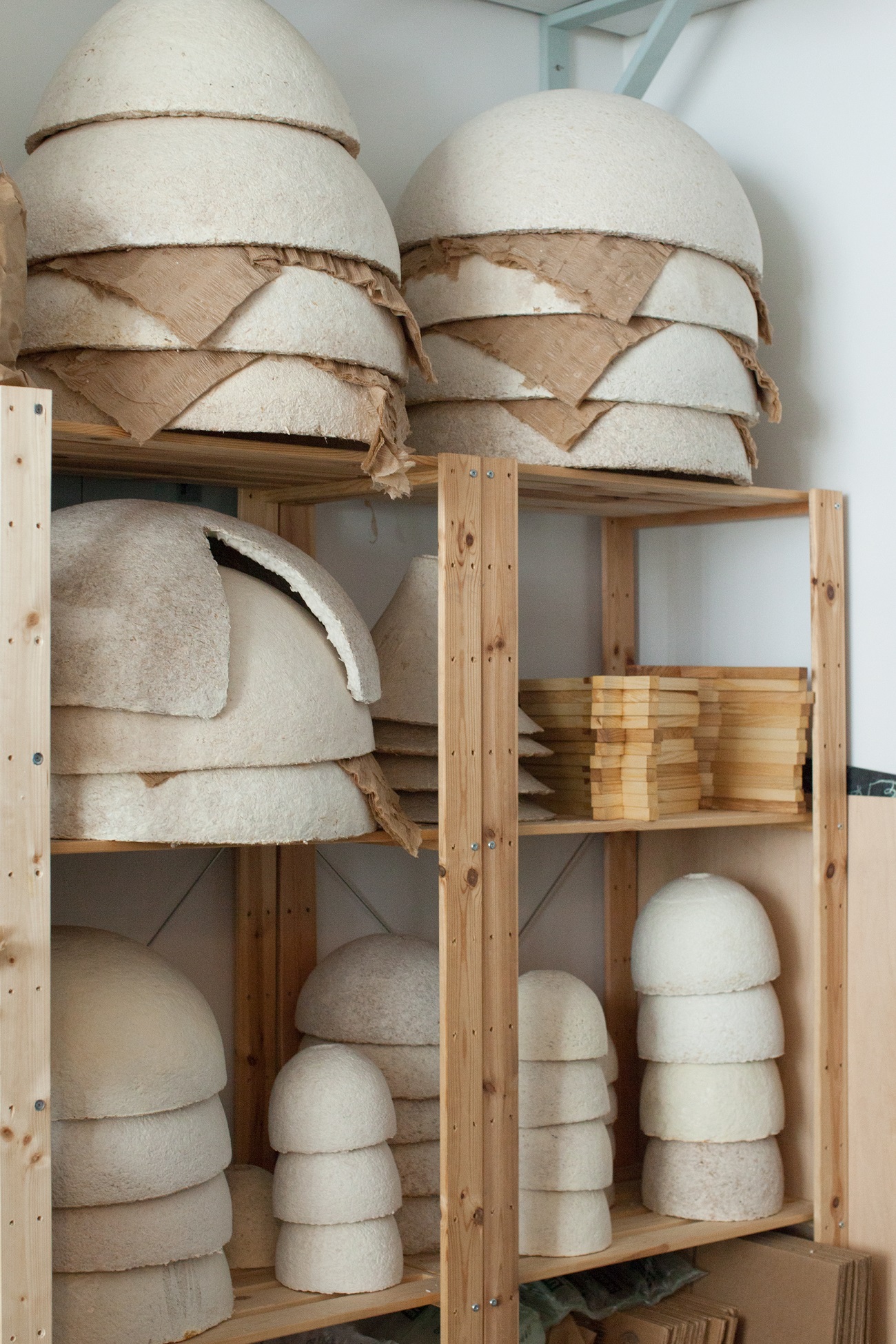
If you showed your work to a kindergartner, how do you think they’d react?
The material is very tactile, so I would encourage them to touch it. It’s soft like a lamb’s ear, a bit fuzzy, naturally white, and surprisingly lightweight. All interesting properties for a biofabricated material grown from the roots of mushrooms. The material is safe and inert as well, with no allergens.
What’s your favorite thing you’ve ever made?
That’s easy… the things I haven’t yet created. There’s a rotating conveyor belt of ideas that’s been circulating for years, either waiting for the right material, the right production process, or the right time to emerge from the ether of my being. They’re the most impossible and inventive and I hope one day they bubble out and up. But perhaps they can easily find favoritism in conceptual form because there they can live unflawed and unrestrained.
Snag your own Mushroom Lamp now »

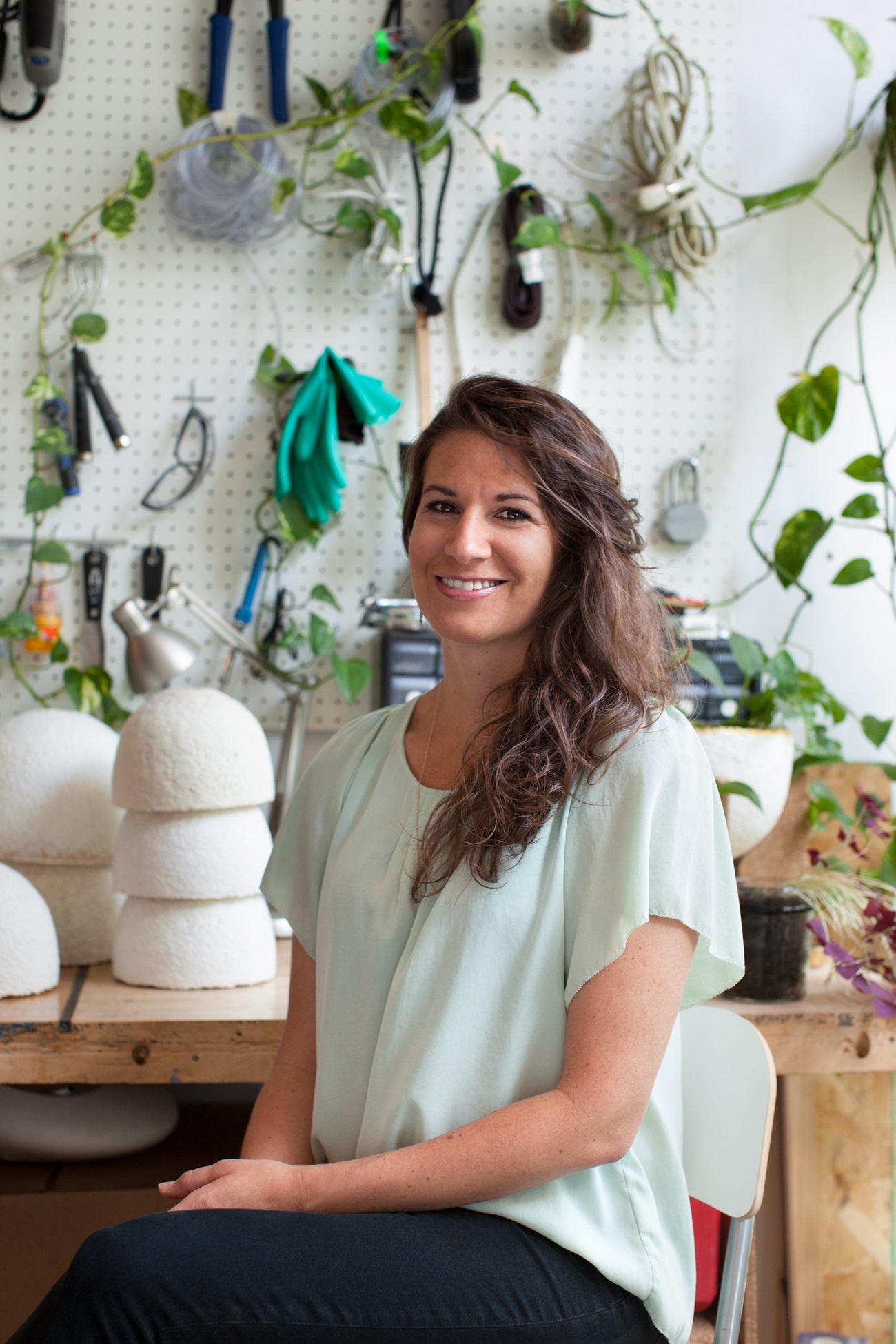
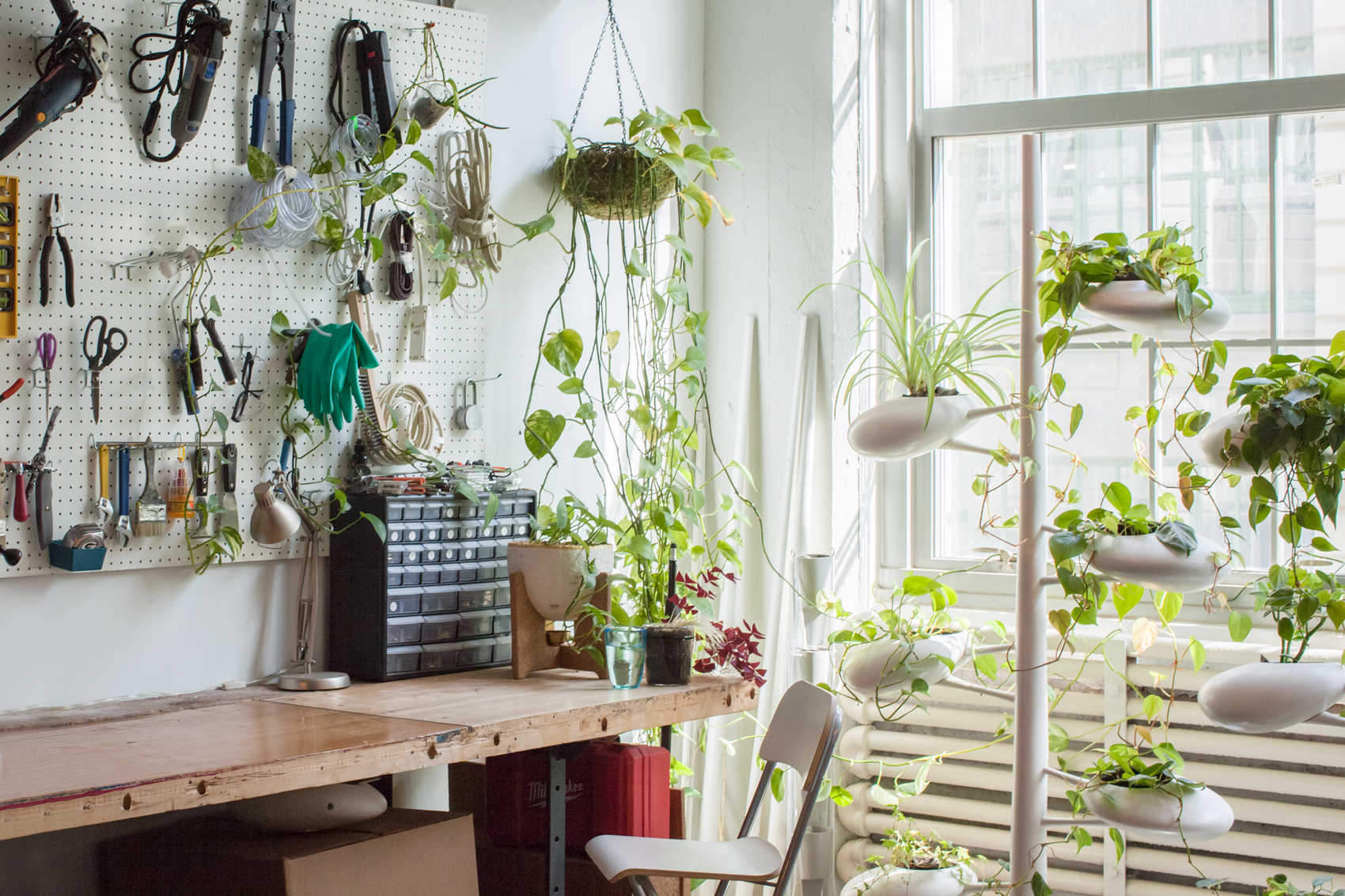
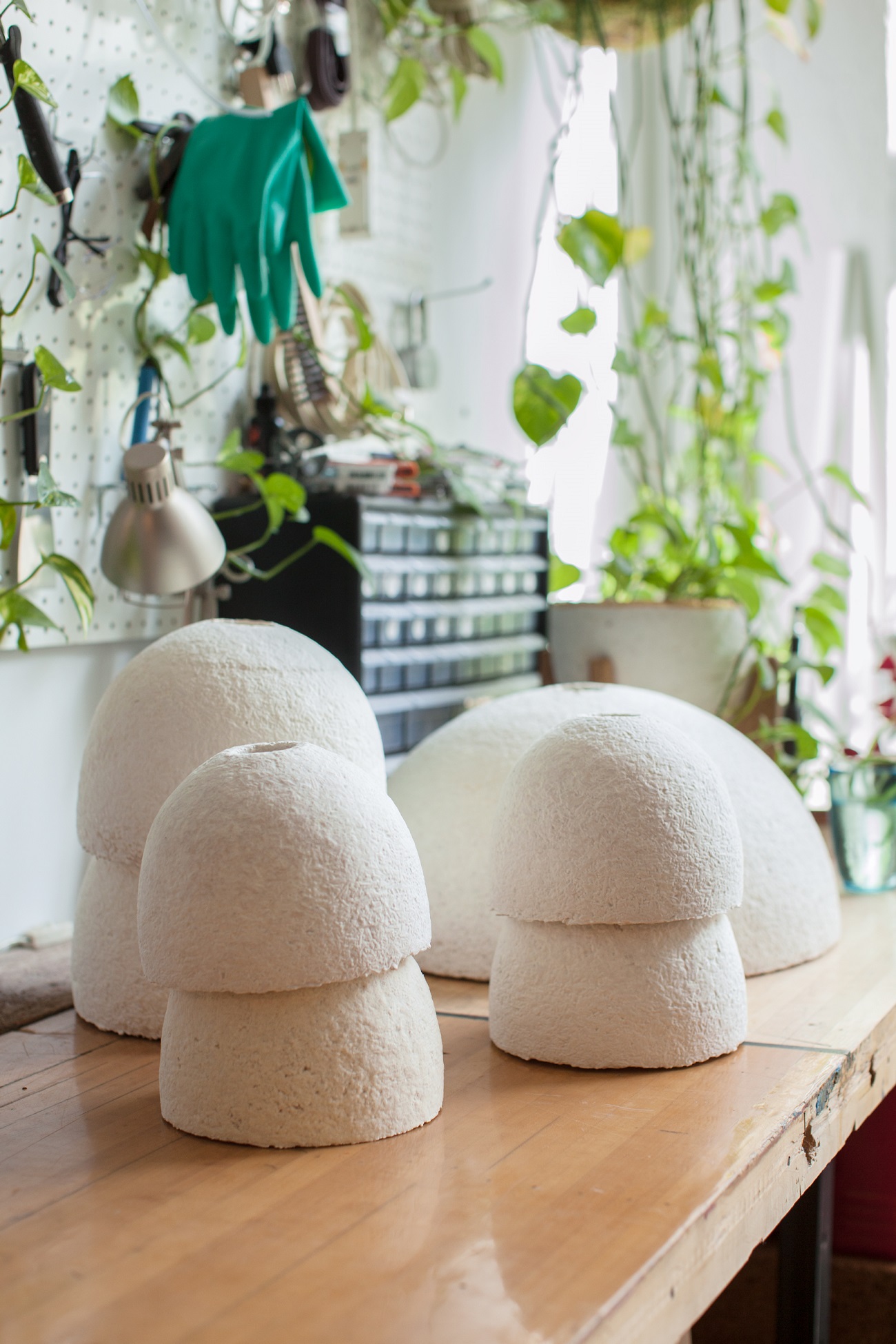
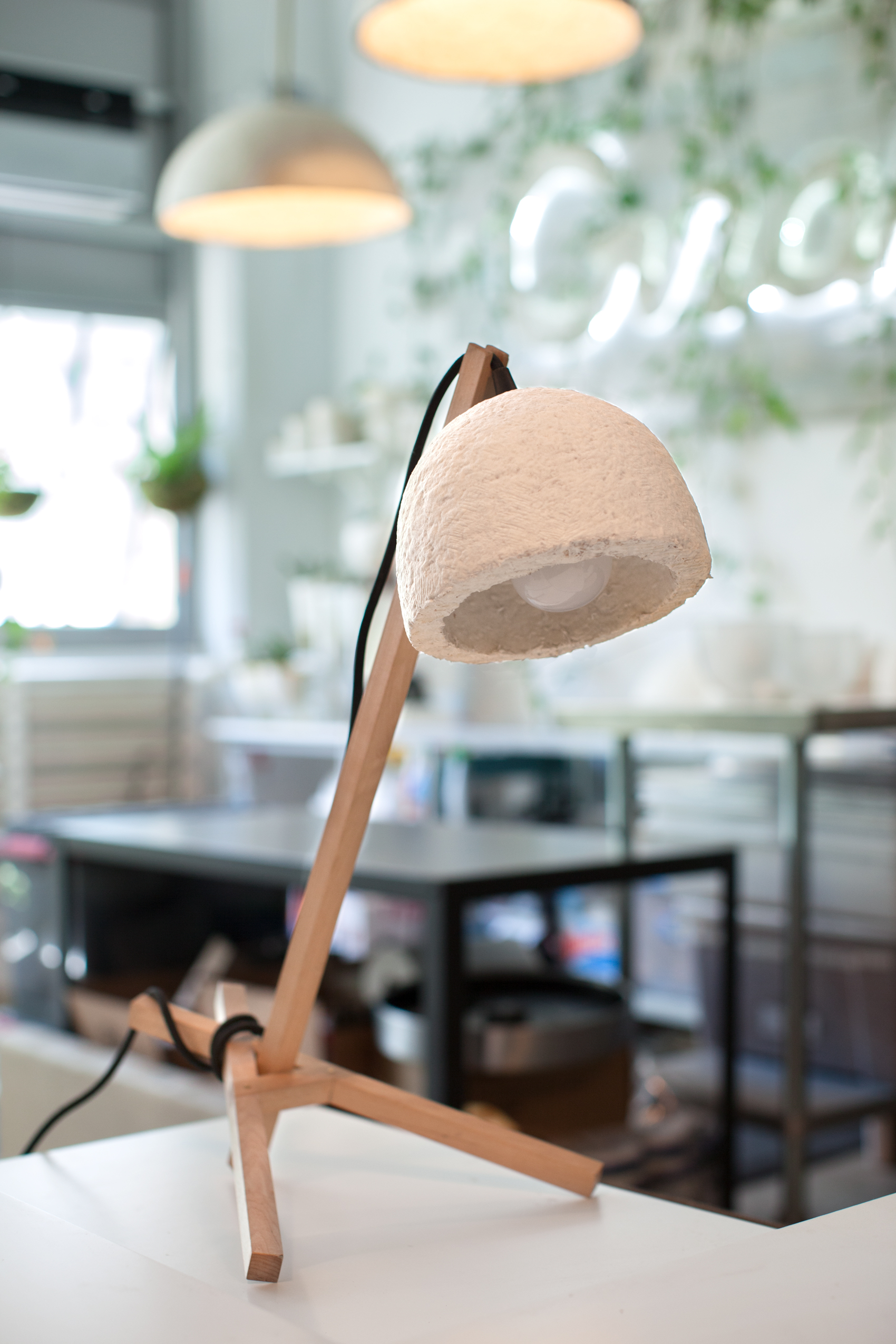
2 Comments
Will these lamps be dual voltage? I love the product and have already backed it!! I was just curious about the power input… due to my work I live in a different country every couple of years and I would love to keep using the lamp whether I’m in the US or Europe.
Hi, Homus, we’re happy to hear you’re supporting Danielle and her designs! The lamp is built to US electronic specifications, so you’ll probably need to converter to use it outside of the US or Canada.